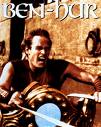
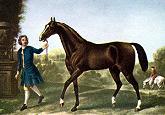
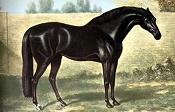
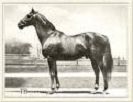
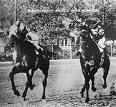
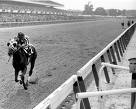






TLW's Horseracing Historyscope |
By T.L. Winslow (TLW), the Historyscoper™ |
© Copyright by T.L. Winslow. All Rights Reserved. |
Original Pub. Date: Mar. 7, 2011. Last Update: Mar. 23, 2019. |
Thoroughbred horseracing is often called the Sport of Kings, although purists like to limit that title to Polo. It's the second most widely attended U.S. spectator sport after baseball. The three types are flat racing, steeplechasing, and harness racing. In 2008 horseracing generated over $100 billion in gambling activity worldwide.

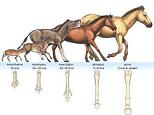

If you go for the modern Theory of Evolution, it all started with the dog-sized Hyracotherium, AKA Eohippus or Dawn Horse, which ranged throughout North America, Europe, and Asia about 55 million years ago. The first ancient horses roamed the North American Great Plains 10 million years ago - up to a dozen species. The earliest fossils of the modern genus Equus are dated 3.5 million years ago and come from Idaho. The first horses in Paleolithic cave art date to 30,000 B.C.E, although the most famous ones at the Lascaux Cave in SW France date to 15,000 B.C. The first evidence of horse domestication dates to the Eurasian Steppes in Ukraine about 4,000 B.C.E. One of the oldest breeds, the Arabian horse of the Arabian Peninsula dates back to at least 2,500 B.C.E., as shown by rock paintings. The camel was domesticated in the Middle East about 4,000 B.C.E. before the horse, and the history is murky, but by 1,500 B.C.E. the domesticated horse began shrinking the Middle East and assuming the role of kingmaker.


If you believe the Bible, horses hadn't been domesticated by the time of Abraham (about 2,000 B.C.E.), because when he left Haran and arrived in Egypt to get away from a famine in Canaan, the pharaoh offered him sheep, oxen, asses, and camels (Gen. 12:16), but no you know what, and 50 years later, when he went to Mount Moriah to sacrifice his only son Isaac, he rode upon an ass, not a you know what (Gen. 22:3). Again, 30 years later, when Isaac's son Jacob returned to Isaac with his babes Rachel and Leah, the Bible lists the oxen, sheep, camels, goats, and asses that he sent to appease his brother Esau, but no you know whats (Gen. 32:14). But when Jacob's and Rachel's son Joseph carried his father's remains from Egypt to Canaan, "there went up with him both chariots and horsemen." 150 years later, the pharaoh chased Moses and the Hebrew nation with "six hundred of the best chariots, along with all the chariots of Egypt" (Exodus 14:7). Around 1000 B.C. Jewish king Solomon had 1,400 chariots and 12,000 horsemen, but although he imported horses from Egypt and Kue (1 Kings 10:26-29), he never imported any from Arabia, although he received gold and silver from them (2 Chron 9:14), proving that they hadn't domesticated horses there yet? A horse back then went for 150 silver shekels.

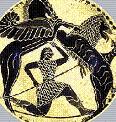
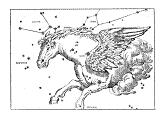
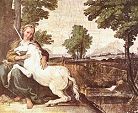
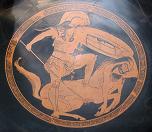
The ancient Greeks claimed that the god Poseidon (Neptune) created the horse, try and not get wet. The real reason is that the natives of Thessaly (the first and best Greek horsemen) believed that Poseidon made their fertile plain habitable by creating an outlet for the Peneius River for the first monarchs Deukalion and Pyrrha. According to Greek historian Diodorus of Sicily (-90 to -21), the first Thessalian colonists came from Egypt. Speaking of Greek myths, the most famous horse is white winged divine horse Pegasus, sired by you guessed it Poseidon and the Gorgon Medusa, who was tamed by Greek hero Bellerophon, who rode him to defeat the Chimera, but fell off his back trying to reach Mt. Olympus, causing Zeus to turn him into the constellation Beller, er, Pegasus. There is also the legend of the Unicorn, which the Greeks didn't consider part of their mythology but rather their natural history, convinced they lived in India or some other faraway land, feel the good. They also had the legend of the Centaur, with a human head and trunk down to the navel, joined to a horse's neck; they allegedly lived in Mt. Pelion in Thessaly and other remote spots.

The saddle (without stirrup) was developed in the 8th cent. B.C.E. by the Assyrians, consisting of a simple cloth and surcingle. The bitless bridle was invented during the reign of Persian king Darius I the Great (-550 to -486) around 500 B.C.E. The saddle tree was invented in Asia around 200 B.C.E., a felt-covered wooden frame that redistributed the rider's weight to keep the horse's back from getting sore, without which stirrups won't work. Stirrups weren't invented until the early 4th cent. C.E. in China, and don't seem to have been known in Europe until the late 6th cent. C.E., although the Huns allegedly used them to advantage.
The Andalusian horse or Iberian horse goes back to at least 450 B.C.E. It was later interbred with the desert Barb horse of North Africa, creating a unique breed by the 15th cent. C.E., right before the Spanish discovered the New World and brought them over.

Polo originated in the murky past, as early as the 5th cent. B.C.E. in Persia, maybe as late as the 1st cent. C.E. In the 6th cent. C.E. the Persian queen and her ladies squared off against Zoroastrian Persian king (590-628) Khosrow (Khusrau) (Chosroes) II Parviz (Ever Victorious) (-628) and his courtiers. Way later, after India and China picked it up, the British latched onto it, founding their first polo club in Silchar, Assam in 1834.

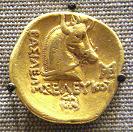
The ancient Greeks were big on chariot racing, building Hippodromes ("horse racecourses") in Delos, Delphi, Isthmia, Lykaion, Nemea, and of course, Olympia. The Olympic Games in Greece, founded in 776 B.C.E. started out as a foot race, but went on to expand and include chariot racing. In 396 B.C.E. and 392 B.C.E. Spartan princess Cynisca (Kyneska) (b. -440) (Lat. "female puppy") won the 4-horse chariot race, although she was the owner not the driver, who had to be male, nude, and greased in olive oil. The most famous ancient Greek warhorse is Bucephalus (Bucephalos) (-355 to -326), owned by blonde Macedonian superman Alexander III the Great (-356 to -323), a Thessalian known for a white star on his forehead and a black coat with a wall or blue eye - the horse, not the man.


The ancient Romans also had legendary horses. Julius Caesar (-100 to -44) had a variety of horses, but he always picked a white one with a fake toe above the hoof, which was considered lucky; he named them Toes. Incitatus (Lat. "swift", "at full gallop") was owned by mad emperor (37-41) Caligula (12-41) (Lat. "little soldier's army boots"), who bestowed the rank of consul first class upon him and gave him a gold wine goblet and an ivory manger, about the same time he declared war on the ocean - the original employers search Monster every day looking for the right candidates.




The ancient Romans were also big on horseracing. The Circus Maximus in Rome dates back to Etruscan times, and staged its last chariot race in 549 C.E. The Hippodrome of Constantinople was started by emperor (193-211) Septimius Severus (145-211) in 203 C.E. and completed by emperor (306-337) Constantine the Great (272-337) in 330 C.E. The ruins are now called Sultan Ahmed Square or Horse Square. A big V by Constantine over his rival Maxentius at the Battle of the Milvian Bridge on Oct. 28, 312 C.E. is still celebrated by an annual horserace on July 5-7 called the L'Ardia Di San Constantino. The V caused Constantine to convert to Christianity and set up the Roman Empire to do ditto, I'll spare you the details now. Too bad, whimpy prude Christian Roman Emperor Theodosius I the Great (347-95) (Lat. "lover of God") (last to rule over both the Western and Eastern halves of the Roman Empire) cancelled the games in 393 C.E. as part of his finalization of the official religion status of Christianity, but the gay Greeks in Constantinople kept on with horseracing. The big chariot race in the 1959 William Wyler film Ben-Hur dramatizes the dangerous fun them pagan Romans loved so much between drunken orgies, okay pagan and Christian Romans, some things never change. The four Arabian horses pulling Judah Ben-Hur's chariot were Aldebaran, Antares, Altair, and Rigel, all named after stars. Too bad, the Nike Riots (Revolt) in 532 C.E. in Constantinople between the city rivals the Blues and the Greens stunk the sport up, killing tens of thousands and burning half the city down, after which the sport's popularity plummeted.
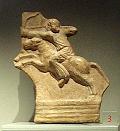



One group that helped weaken the Roman Empire starting around 100 B.C. were the famed Parthians of NE Iran, who had a victorious army of horse archers known for the Parthian Shot, which is now in the vernacular as parting shot. That's where they pretend to retreat then turn backwards and shoot you when you're not expecting it. This worked great against stupid Roman generals, who still relied on an infantry army with a small spear-sword-carrying cavalry, making them easy to confuse, befuddle, split into sections, and pick apart from a distance. It took until the disastrous defeat of super-rich Roman Gen. Marcus Licinius Crassus (-115 to -53) at the Battle of Carrhae in 53 B.C. for the Romans to finally begin to catch up in the cavalry department with mounted archers. Crassus was a lousy general but thought he was the opposite because of his defeat of the ill-equipped ill-trained slave army of Spartacus (-109 to -71).
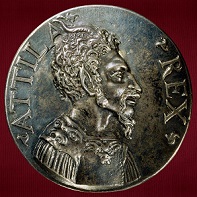
A big factor in bringing the Western Roman Empire down were the horrible hordes of cruel Huns, 850K horsemen led by Attila the Hun (406-53), a mean 3.5 ft. midget, who romped in Gaul and Italy in 451-2 C.E., gutting the heart of the Western Roman Empire, after which it was dependent on the heretic German Visigoths for mercenary services, until they decided to just take over. Too bad, not much is known about the Huns' horses, causing some to even doubt that they had that many, maybe they ate them.
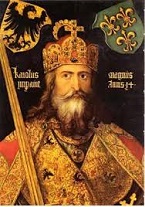

After the Western Roman Empire fell in 476 C.E. to a network of Visigoth kingdoms in Italy, Spain, North Africa, and Gaul, the whole region sank into an endless struggle for existence against pagans, heretics, Muslims, Vikings, and other internal and internal enemies, the Wild Wild Wild Wild West. The ultimate outcome was the formation of the modern nation-states of Italy, Spain, France, Germany, England, etc., complete with their own mixed version of fractured Latin and German, the so-called Romance (from Rome) languages. Famous Christian warhorses include Tencendur (Tencendor) (Lat. "strife"), warhorse of Frankish king (768-814) Charlemagne (742-814). Also Babieca (Bavieca) (Sp. "stupid"), warhorse of El Cid (Rodrigo Diaz de Vivar) (1043-99).

Speaking of Muslims, Islam was founded by maybe-real maybe-fictional Muhammad (570-632), who apparently lived in an Arabia that still hadn't domesticated horses, because when he fought the pesky pagan Quraysh (Quraish) tribe, he had only two horses in his whole army, and after he defeated them, he plundered 24K camels, 40K sheep, and 24K oz. of silver, but not a single you know what.
Speaking of pagans, despite China having been the leader in domesticating the horse and inventing all the gear, their horses were pansies, and they often were forced to buy breeding stock from Mongols and other nomadic neighbors. Only with the Tang Dynasty in 618-907 C.E. did they get serious about horse breeding, which fell apart along with the dynasty. Hence like the people, the horses are not the kind to win Olympic events other than ping-pong, sorry.

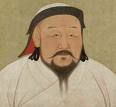

Speaking of the Mongols, in 1211 they invaded China, led by Genghis Khan (1162-1227), after which his grandson Kublai (Khubilai) Khan (1215-94) founded the Yuan Dynasty in 1279, which lasted until 1368. According to Italian (Venetian) visitor Marco Polo (1254-1324), Mongol horsemen could travel up to 10 days living only on horse's blood, which they drank from a pierced vein.







Modern British-style horseracing might be said to have started when Roman soldiers organized horseraces in Yorkshire around 200 C.E. between forays against the pesky native Celts. Actually, Julius Caesar invaded Britain in 55 B.C. and 54 B.C., and so admired the native British horses that he had several sent to Rome, after which they were in demand throughout the empire. In the early 400s C.E. the crumbling Romans pulled out of Britain, allowing the Celts to come out of their hiding places, only to be driven back by waves of Germans, the ever-famous pagan Angles, Saxons, and Jutes, who were slowly Christianized and united to become Saxon England, only to see the haughty Frenchified Norwegians called the Normans invade and take over in 1066 after winning the great Battle of Hastings on Oct. 14. Skipping ahead, the Crusades (1096-1270) saw Norman English knights return with captured Arabian horses, ramping the need for speed up, who knows what bloodlines they injected into the English mix. Actually, Norman Crusaders classified their horses as either destriers (expensive), coursers (mid-priced), or rounceys (cheap). In 1066 Frenchman Geoffroi de Purelli set down the rules for jousting tournaments, after which he was killed at his own tournament, oil the quintain. Jousting is just one type of Hastlitude (Lat. "lance game"), horses are all-terrain vehicles too. While on Crusade, English Norman king (1189-99) Richard I Lionheart (Coeur de Lion) (1157-99) bought two Arabian horses in Cyprus, which he put gold bridles on, causing them to be called brigliadores. English Plantagenet king (1100-35) Henry I (1068-1135) imported the first Arabian stallions to improve the pony-sized Irish Hobby (Hobin) horses; actually it was King Alexander I of Scotland, in 1121, and he only imported a single Arabian stallion to present to the Church of St. Andrews? After Henry I died, his kingdom sunk into civil war, and no more importing was likely done until the time of English king (1154-89) Henry II (1133-89), who imported horses "from beyond the sea". In 1174 the first recorded horserace was held in Smithfield, London, which was also a horse market. In 1185 Henry II paid 2 pounds, 12 shillings and sixpence for 15 breeding mares, while a good handsome horse went for 10 pounds, and it cost tenpence a day to hire a cart with two horses. English king (1199-1216) John I Lackland (Softsword) (1166-1216) imported 100 chosen stallions from Flanders to improve English draught horses, and accepted fine horses instead of money from his subjects. English king (1307-27) Edward II (1284-1327) purchased 20 warhorses and 12 heavy draught horses from Lombardy. English king (1327-77) Edward III (1312-77) spent 1K marks for 50 Spanish horses, and made it a felony to export horses, especially to hated rival Scotland. English king (1377-99) Richard II (1367-1400) tried to regulate horse prices in the chief breeding counties of Lincoln, Cambridge, along with East and North Ridings of Yorkshire. And that was just the Plantagenets.


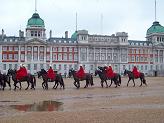
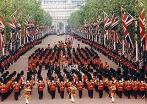
The Wars of the Roses in 1455-85 between the bloody Red Rose of Lancaster and the Peppermint Patty White Rose of York decimated England's horse pop. causing English Tudor king (1485-1509) Henry VII (1457-1509) and his son king (1509-47) Henry VIII (1491-1547) to rebuild the English cavalry with horses imported from Italy, Spain, and North Africa. Henry VII continued to prohibit exportation of stallions, but allowed it for mares aged two and older under the value of six shillings eightpence. After Henry VIII set up a racing stable and raced his horses against those owned by other nobles, the term "hobby" was overlayed to mean a costly pastime indulged in by the idle rich. Talk about idle rich, in 1540 while gleefully destroying Catholic monasteries and looting them, turncoat Catholic king Henry VIII decided that no stallion in his realm should be shorter than 15 hands, 13 for mares, causing breeds like the Cornish to be extinguished, and others like the Exmoor and Dartmoor to get taller. The Horse Guards Parade started out in the tiltyard of Henry VIII's Whitehall Palace next to St. James's Park, in 1748 becoming the site of the annual Trooping the Colour Ceremony to celebrate the monarch's official birthday on the 2nd Sat. in June.


Meanwhile in 1493 on his second voyage, Christopher Columbus (1451-1506) brought horses to North America, the West Indies actually, and luckily they were the Spanish kind. In 1519 Spanish conquistador Hernan Cortes (Cortés) (1485-1547) brought them to the American mainland, after which those that got loose were captured and tamed by the Native Americans, who mastered them and became great horse warriors, see any Kevin Costner flick.
In the days of Henry VIII there were no Thoroughbreds, but there were horseraces at Garterly in Yorkshire, Croydon in S England, Stamford, and at Theobald's on Enfield-chase. There were no racetracks either: they just raced cross-country, what they called "train-scent". No rider could weigh less than 10 stones. Betting on horses was not yet established, and the prize was often a wooden bell covered with flowers, or if they were lucky, as on Shrove Tuesday, a silver bell, causing the expression "bearing away by the bell" to be coined. Henry VIII used tax revenues to maintain his royal stables, in the hopes that breeding winners with winners would improve the quality of the cavalry; a stallion can mate with 40 mares a year. Too bad, Henry VIII's Master of the Horse knew nothing about genetics and recklessly crossbred the entire stable of international horses with a wide mix of genes, causing the progeny to be called "cocktails".

In 1579 during the reign (1558-1603) of English queen (last Tudor monarch) Elizabeth I (1533-1603), the use of horse coaches was introduced; before that everybody including her rode on horseback. Too bad, coaches encouraged the breeding of heavy slow horses, which combined with her daddy Henry VIII's tyrannical rules and regulations conspired to reduce English horses to the worst kind for racing, but luckily the advent of gunpowder caused the heavy armor to come off and created a new need for light fast cavalry horses. Old Bess greatly improved her daddy's stable during her long reign, removing loser horses while moving the best ones to new barns at Tutbury near Staffordshire. She kept a personal close watch on matings, and systematically recorded pedigrees, albeit she was known as the Virgin Queen for her own lack of progeny. On the advice of her Master of the Stable, she acquired Arabian horses, breeding stallions to Hobby and Galloway (Scottish) mares.
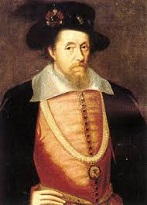

When the Old Nag died, enter the Stuarts. In 1605 after discovering the village while out hawking, English king (1603-25) James I (1566-1625) of King James Bible fame introduced the sport of horseracing to Newmarket in Suffolk about 65 mi. N of London, and ended up spending so much time there that the House of Commons petitioned him to concentrate more time on govt. affairs. Ever since Newmarket was the home of horseracing in England. James I was another monarch who tried to breed racehorses, purchasing a famous Arabian horse from a merchant named Markham for 500 pounds. Too bad, in 1658 William Cavendish, 1st Duke of Newcastle-upon-Tyne (1592-1676) wrote a book on horsemanship which tore this horse down as bony and slow, causing the English to turn their noses up at Arabians for decades.
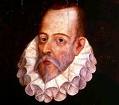
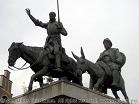
Also in 1605, after the Crusades fizzled out and Christians gave up on Jerusalem but satisfied themselves with exploiting the New World and revelling in the revelation that White Is Right, Spanish writer Miguel de Cervantes Saavedra (1547-1616) published the classic The Ingenious Gentleman Don Quixote of La Mancha, a satire on the Crusades and Age of Chivalry, which featured his lazy skinny horse Rocinante (Rosinante) (Sp. "nag").

Before getting beheaded by the Puritan Parliament, English king (1625-49) Charles I (1600-49) established horseraces at Newmarket and Hyde Park, and in 1627 introduced the bit into use in the cavalry, allowing snaffles only for racing and hunting; until then for some reason the English didn't like putting bits on horses even though they were used since Roman times. In 1649 after he was beheaded, official inventories listed the late Charles I as owning 139 stud horses and 37 brood mares.


In 1654 Puritan sourpuss Oliver Cromwell (1599-1658) bans horseracing in England, while keeping his own private stock of studs, but after he dies Charles II (1630-85) is restored in 1660, and he reinstates the sport, establishing the Newmarket Town Plate in 1665 in Newmarket, Suffolk, which he wins in 1671, becoming the first (only) reigning monarch to ride a winner.

In British North America, New Market, the first racetrack was laid out on Long Island, N.Y. in 1665, after which racetracks came and went for the next 2 cents., suffering under an 1802 N.Y. state legislature act banning horseracing, which was lifted in 1821 after lobbying by the New York Association for the Improvement of the Breed of Horses (founded 1820), but only in Queens and only in May-Oct., causing the Union Course to be built in 1821.
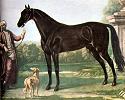
Until the big V by the Christian West in 1683 at the Battle of Vienna, cool superfast Arabian horses were the exclusive province of scary Muslims, but after the 1686 Battle of Buda the first Thoroughbred horses were developed by crossbreeding English mares with imported Arabian stallions, starting with the Byerley (Byerly) Turk (1686), helping to dispel the English prejudice against Arabians, but not much.

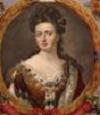



Dutch import English co-regents (1689-1702) William III (1650-1702) and Mary II (1662-94) were into horsebreeding bigtime, importing every variety of horse from the East in the hopes. In 1711 Queen Anne I established the Royal Ascot Horserace (pr. like "ask it") at Ascot Heath, Berkshire, becoming the #1 annual event for the British aristocracy, at which royal attire is cool, esp. ascot ties.
During Queen Anne's reign horseracing went professional, complete with betting, in other words profitable, and the Arabian finally began to be accepted, starting with the Darley Arabian (1704), followed in the reign (1727-60) of George II (1683-1760) by the Godolphin Arabian (1724-54) (1729), and the acceptance was confirmed with the latter's bay colt by English mare Roxana named Lath (1724-53), who became a top racehorse, followed by Regulus (1739-65), who went undefeated, after which the Thoroughbred line was off and running on all four hooves. Don't ask why English mares add anything to pure Arabian stock, it is one of them White is Right junk cakes with virtual racist cherries on top. Actually, there are shades of gray, and besides the Arabian they bred-in the Barb from the Barbary Coast of North Africa, and the greyhound-like Turk (Turkoman) (Turkmene) from Turkmenistan; the Byerly Turk was probably really a Turk, but the Godolphin Arabian was probably a Barb. Janus (1746-), grandson of the Godolphin Arabian was imported to colonial Virginia in 1756, and became the basis of the muscular American Quarter Horse, which could sprint at up to 55 mph in short races of guess how long.

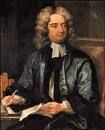
The Big V that stopped the endless Muslim jihad by the Ottoman Turks also coincided with the end of the Thirty Years' War between Catholics and Protestants in 1648, and the rise of Science, capped by towering giant Sir Isaac Newton (1643-1727), whose Annus Mirabilus in 1666 was like an atomic bomb. The result was the 18th cent. Age of Reason (Enlightenment) in Europe, dethroning the Church as the ultimate authority, and opening people up to the idea that mankind can work together to discover new things that God never told them in musty old holy books. This resulted in a spurt of great science, including false starts like Scientific Racism, but also great fiction, including the classic Gulliver's Travels, published in 1726 by Irish clergyman Jonathan Swift (1667-1745), which became a bestseller. No surprise, it presented the Houyhnhnms, a race of intelligent horses, who look down on savage humanoid Yahoos. You guessed it, this is where Yahoo.com found its name.
In 1727 Cherney's Racing Calendar (records of horse races run the previous year) begins publication by John Cherney.
On Feb. 1, 1734 the first horserace in British Am. is held in Charleston Neck, S.C.
In 1740 Parliament passed an act "to restrain and to prevent the excessive increase in horse racing", but it was ignored by scofflaws. In 1752 the Jockey Club was founded to create and apply horseracing rules, and it governed the sport until its governance role was taken over by the British Horseracing Board, founded on June 10, 1993. On July 30, 2007 the BHB was merged with the Horseracing Regulatory Authority div. of the Jockey Club to create the British Horseracing Authority, taking the Jockey Club out of the regulation business. In 1752 there were only two horseraces a year at Newmarket, in spring and Oct., but in 1753 they added the Second Spring and the July, in 1762 the Second October, in 1770 the Third October or Houghton, and in 1771 the Craven on Easter Monday, giving seven. In 1807 the 2 mi. 4 furlong Ascot Gold Cup was founded for Thoroughbreds aged 4 years and older. On June 21, 2013 the Royal Ascot Gold Cup horserace saw the Queen's horse Estimate (4-y.-o. filly) win for the first time in the race's 207-year history. In 1838 the 2 mi. Queen's Vase was founded at Ascot for 3-year-old Thoroughbreds, opening to older horses in 1840. In 1843 the 1 mi. Royal Hunt Cup was founded at Ascot for Thoroughbreds aged 3 years and older. All three of these trophies are presented by the queen, and kept by the winning owners.
Meanwhile in nearby Ireland, regular horseracing began in 1741 at the Curragh Racetrack in County Kildare, which claims to have hosted chariot races in the 3rd cent. C.E., and which became the center of Irish flat racing. In Nov. 1749 the Sportsmen of the Curragh were formed in the Rose and Bottle in Dame St., Dublin, which became the Turf Club in 1790. Earlier a 4-mi. horserace was run at the Curragh in 1634 between the Earl of Ormond's horse and Lord Digby's, which was won by the former. In 1665 a match race was held at Sandymount in Dublin before a crowd of 5K and presided over by the Lord Deputy Essex, who awarded a valuable plate to the winner. In 1685 horse lover Charles II granted a royal charter to Down Royal (Downpatrick) Racecourse, and in 1690 the Byerley Turk won a silver bell as a prize before going to fight in the Irish Wars. In 1752 the Steeplechase allegedly originated in Doneraile, Cork, Ireland when Cornelius O'Callaghan and Edmund Blake raced between Buttevant Church and St. Leger Church, which were 4 mi. apart and just close enough to see the steeple if they went in a straight line and jumped over fences, gates, streams etc.

On May 4, 1779 the first annual Epsom Oaks for 3-y.-o. fillies, organized by Edward Smith-Stanley, 12th Earl of Derby (1752-1834) was run at Epsom Oaks in Carsharlton, 10 mi. of Charing Cross, London; the winner was Lord Derby's horse Bridget. In June 1780 the first Derby (Derby Stakes) (Epsom Derby) (AKA the Blue Riband) at Epsom Downs in England for 3-y.-o. colts (and later fillies) was run, becoming Britain's richest horse race; it was won by Diomed (1777-), owned by Sir Charles Bunbury; in 1787 Lord Derby's horse Sir Peter Teazle (1784-1811) won.

On Feb. 26, 1789 chestnut foal Thoroughbred horse Eclipse (1764-89), descended from the Darley Arabian, born on the estate of the Duke of Cumberland during a solar eclipse, who won 26 consecutive races (incl. 11 King's Plates at Newmarket), and went on to sire three English Derby winners died; his heart weighs 14 lbs.; one of his hooves was set in gold and made into a drinking goblet, where it was placed in the Jockey Club of Newmarket. In 1791 the first General Stud Book was pub. in Britain; the American Stud Book didn't come out until 1868, getting Thoroughbred racing off to a late start in the states.
In 1814 the English Triple Crown of Thoroughbred Racing was established, including the 1 mi. 2,000 Guineas Stakes (founded 1809) (Apr.-May), the Blue Riband 1 mi. 4 furlong 1 yard (Epsom) Derby (pronounced like Darby) (founded 1780) (early June) (richest British horserace), and the 1 mi. 6 furlong St. Leger Stakes (founded 1776) (Sept.) in Doncaster, Yorkshire, all of which are open to colts and fillies. The 1 mi. 1,000 Guineas Stakes (founded 1814) at Newmarket (Apr.-May), and the 1 mi. 4 furlong 10 yards Epsom Oaks Stakes (founded 1779) (early June) are only open to fillies.
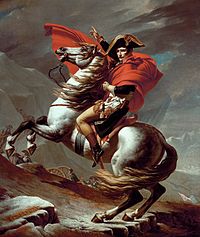
Marengo (1793-1831) was the famed gray Arabian horse of French emperor Napoleon I Bonaparte (1769-1821), who named him after the June 14, 1800 Battle of Marengo in Piedmont, Italy. Napoleon's chef Dunand invented yummy Chicken Marengo (chicken, garlic, tomatoes, white wine and cognac with crayfish and fried eggs on the side) after the battle, and Napoleon ordered it served henceforth after every battle, going on to conquer Italy.

In 1802 Charles Lennox, 4th Duke of Richmond (1764-1819) introduces horseracing at his ancestral home Goodwood House in Westhampnett, West Sussex, england.
In 1834 the Jockey Club (originally the Society for the Encouragement of the Improvement of Horse Breeding in France) is founded in Chantilly, France, going on to become the club for most of the sporting gentlemen of Paris, attracting English as well as French members; in 1833-60 it turns the Champ de Mars in Paris into a horseracing course; in 1863-1913 it has a HQ in the Hotel Scribe next to the Opera Garnier in Paris, where they insist that there be no ballet in the first act so that they can eat dinner, hissing a production of Wagner's "Tannhauser" off the stage in 1861 when he tried it, causing him to refuse to hold another production in Paris.
On Feb. 29, 1836 the first 4 mi. 4 furlong Grand Nat. Horserace is run at Aintree Racecourse in Liverpool, England, and is won by The Duke this year and next, followed by Sir William in 1838 (The Duke was 3rd); there are 16 fences in the course, of which all except the Chair and the Water Jump are jumped twice; the 6th jump known as Beecher's Brook becomes infamous for injuries and fatalities to horses.
In 1845 the Happy Valley Racecourse in Hong Kong was built by the Brits for their use only, but the Chinese pop. soon turned on to the sport too. In 1884 the Hong Kong Jockey Club was founded, and now $1B a year is gambled annually on horses there. When China took Hong Kong back in 1997, the popularity of horseracing spread to the mainland despite it being illegal since the People's Republic of China was declared on Oct. 1, 1949. On Nov. 29, 2008 after illegal horseraces were sponsored by gamblers, the govt. finally mellowed (wanting a piece of the action?) and founded the China Speed Horse Race Open in Wuhan, with small betting sums allowed.
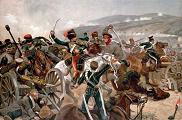
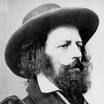
Horses showed how brave, loyal, and stupid they are in the infamous Charge of the Light Brigade during the Battle of Balaclava in the Crimean War on Oct. 25, 1854. It did result in an immortal contribution to literature, the poem The Charge of the Light Brigade by English poet laureate Alfred Lord Tennyson (1809-92).


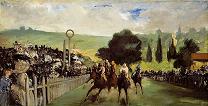
On Apr. 27, 1857 (Sun.) the first horserace was run at the Hippodrome de Longchamp (Longchamp Racecrouse) in Bois de Boulogne, Paris, France on the Seine River in front of a large crowd including Emperor (1848-70) Napoleon III (Louis-Napoleon Bonaparte) (1808-73) and his wife (since 1853) Eugenie de Montijo (1826-1920); until 1930 the horseracing fans prefered to sail down the river in steamboats to the Pont de Suresnes before embarking to go to the track. Only the aristocracy was allowed into the Royal Enclosure, and mere upper class persons had to watch from their barouche carriages on the lawn. The several interlaced tracks feature a famous hill. In 1920 it first hosted the 1.5 mi. Prix de l'Arc de Triomphe Thoroughbred horserace, the most prestigious in Europe, becoming the 2nd richest turf race after the Japan Cup. "Not so much a race as a monument" (slogan).

Right before the U.S. Civil War, horses rode into glory in the Pony Express, which delivered mail across the Great Plains, Rocky Mts., and High Sierra from St. Joseph, Mo. to Sacramento, Calif. from Apr. 3, 1860 to Oct. 1861, when telegraph wires replaced them. At least after the Civil War ended, horses and people could settle down to civil life, including the sport of you know what.
In 1861 the first Melbourne Cup was run in Australia, becoming known as "The Race That Stops a Nation." It is held on the first Tues. in Nov. The 1930 winner Phar Lap (1926-32) died of a mysterious illness in the U.S., causing speculation that he was poisoned by American gangsters who didn't want the competition.
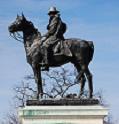

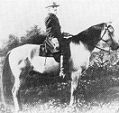

The U.S. Civil War of 1861-5 resulted in two warhorses gaining fame. The first was Cincinnati (1860-78), horse of Union Gen. Ulysses S. Grant (1822-85). The second was Traveller (1857-71), horse of Confederate Gen. Robert Edward Lee (1807-70). During the Civil War on Aug. 3, 1863 Saratoga Race Course in Saratoga Springs, N.Y. opened, becoming the oldest organized sporting venue in the U.S. by modern times.
In 1866 Jerome Park Racetrack in Westchester County, N.Y. opened for thoroughbred horseracing, served by Fordham Station, becoming the site of the Belmont States until 1890; in 1867-89 it hosted the 1-mi. Champagne Stakes for 2-y.-o. horses, and in 1868-94 it hosted the Ladies Handicap for fillies and mares; in spring 1876 the Westchester Polo Club was founded there, and on May 13 the first outdoor polo match in the U.S. was held there; in 1894 Jerome Park closed in favor of nearby Morris Park.

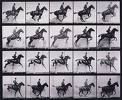
In 1870 the first time-sequence photography of a horse in motion was made by English-born American photographer Eadweard James Muybridge (1830-1904) using his zoopraxiscope to settle the bet of whether all four hooves ever leave the ground at the same time; the answer is yes. Also in 1870 Monmouth Park Racetrack in Long Branch, N.J. was opened; too bad, it was sold for back taxes in 1894, but was reopened on June 19, 1946 in Oceanport, hosting the first 1-1/8 mi. Haskell Invitational Handicap in 1968 for 3-y.-o. horses, becoming a major race between the U.S. Triple Crown and the Breeders' Cup, with a $1M purse.
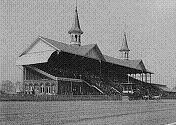

On May 17, 1875 the first 1-1/4 mi. (10 furlong) Kentucky Derby for 3-y.-o. Throughbred horses was run in front of a crowd of 10K at Churchill Downs in Louisville, Ky., AKA "The Most Exciting (Fastest) Two Minutes in Sports" and "The Run for the Roses"; it was won by the colt Aristides (1872-93), who came in 2nd in the Belmont Stakes. It is now held annually on the first Sat. in May. The winning horse gets a blanket of roses, and the $2M purse today is nice for the owners. On May 19, 1875 the Kentucky Oaks for Throughbred fillies at Churchill Downs at Louisville, Ky. was first run, modeled on the English Epsom Oaks; winner was Vinaigrette, who won a purse of $1,175. It's now run on the Fri. before the Kentucky Derby, and has a $500K purse plus a garland of "Lillies for the Fillies". On May 3, 1952 CBS-TV broadcast the Kentucky Derby nationally live for the first time; Eddie Arcaro (1916-97) rode Hill Gail (1949-68) to his 5th Derby win, and won the first purse exceeding $100K. In 1968 Dancer's Image (1965-92) become the first (only) horse to win the Kentucky Derby and then be disqualified for drugs, traces of the anti-inflammatory analgesic phenylbutazone, causing Forward Pass (1965-80) to be awarded first place, going on to win the Preakness Stakes; too bad, years later horse regs were changed to permit horses to run on phenylbutazone.
The Kentucky Derby is the first leg of the U.S. Triple Crown of Thoroughbred Racing, and is followed in two weeks by the 1-3/16 mi. (9.5 furlong) Preakness Stakes (founded 1873) at Pimlico Race Course in Baltimore Md. (founded 1870), AKA the Run for the Black-Eyed Susans (state flower of Md.), and in three more weeks by the 1-1/2 mi. (12 furlong) Belmont Stakes (founded 1867), held at Belmont Park (founded 1905) in Elmont Hamlet, Hempstead, Nassau County, Long Island, N.Y. Pimlico was named after the 1660s Olde Ben Pimlico's Tavern in London; the first Dinner (Dixie) Party Stakes at Pimlico in fall 1870 was won by colt Preakness, causing the Preakness Stakes to be named in his honor. On May 23, 1873 the first Preakness States at Pimlico Racecourse in Baltimore, Md. for 3-year-olds was run, with a purse of $15K; the winner was Survivor (1870-) by 10 lengths, which was not bested until 2004 by Smarty Jones (11.5 lengths). The first Triple Crown winner was Sir Barton (1916-37) in 1919. The last Triple Crown winner was #11 Affirmed (1975-2001) in 1978, ridden by jockey Steve Cauthen (1960-); his rival Alydar (1975-90) ran 2nd in all three. In 1887 the American Horse of the Year Award was founded for most outstanding racehorse regardless of age. The horse with the most wins (5) is Kelso (1957-83).

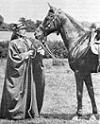

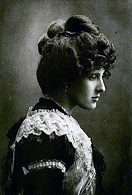
On July 2, 1878 the Crabbet Arabian Stud was established in England when poet-writer Wilfred (Wilfrid) Scawen Blunt (1840-1922) and his wife Lady Anne Blunt (daughter of Ada King, Countess Lovelace, and maternal granddaughter of Lord Byron) brought them from Aleppo, Syria to their Crabbet Park estate in Sussex, later buying more studs from Egyptian breeder Ali Pasha Sherif (-1897) after horse sickness killed thousands in the late 1870s and only the ones he had moved to upper Egypt were saved; their daughter Judith Anne Dorothea Blunt-Lytton, 16th Baroness Wentworth (1873-1957) inherited the horses and became an authority.
In 1883 Mahalaxmi Racecourse in Bombay (Mumbai), British India was built by the Western India Turf Club, founded on Jan. 10, 1798 by the Brits. In 1923 the first Eclipse Stakes was run there, and in 1935 King George V added the word Royal to the turf club's name. In 1943 they hosted the first Indian Classics, followed in 1964 by the Indian Turf Invitational Cup. More horseraces are conducted in Pune, 60 mi. SE of Bombay. Meanwhile on Jan. 18, 1924 the Lahore Race Club was founded, surviving the break with India.
In 1885 the Tennessee Walking Horse (Walker) breed was created in the U.S., becoming the only breed naturally capable of overstriding.

In 1890 American cowboy Frank T. Hopkins (1865-1951) allegedly took his mixed-blood mustang Hidalgo into Arabia and won a 3K-mi. horserace that passed the Gulf of Syria and crossed two country borders against Arabian horsemen, inspiring the 2004 film Hidalgo, starring Viggo Mortensen. Too bad, it's probably a bunch of moose hockey - he did work for Buffalo Bill's Wild West Show.
Way Down Under, in 1894 the Railway Stakes was first held at Ascot Racecourse in Perth, West Australia. By 2007 the prize money reached $1M.
By 1890 there were 314 horseracing tracks operating in the U.S., and on Feb. 9, 1894 the American Jockey Club was formed in New York City to codify the rules, regulate the sport, and fight organized crime and corruption. On Sept. 27, 1894 Aqueduct Racetrack (AKA the Big A) opened in Queens, N.Y. near a conduit of the Brooklyn Water Works that carried water from Long Island to the Ridgewood Reservoir, marking the high water mark of U.S. horseracing for a long time. In 1894 Morris Park Racecourse in Westchester County, N.Y. opened for thoroughbred horseracing, hosting the Belmont Stakes; in 1895 it hosted the Preakness Stakes; in 1895 Bronx annexed it, and it became Morris Park; it closed in 1904.
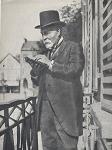



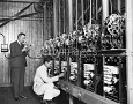
Too bad, the Victorian Age caused all fun, er, sins to be looked down on by the Bible-thumping establishment in Britain and the U.S., causing Bible-thumping caveman throwbacks like 6' 175 lb. Carrie A. Nation (1846-1911) to attack Kansas saloons with hatchets, and U.S. postal inspector Anthony Comstock (1844-1915) to gleefully censor obscene material. Gambling was easily seen as the worst of all sins, especially when the govt. didn't get its cut, causing the popularity of horseracing to decline until the advent of Parimutuel Betting, which was invented in 1867 by fun-loving Moulin Rouge founder Joseph Oller (1839-1922), which without automation is too involved, and was slow to get out of the er, starting gate. By 1908 after horseracing was banned in virtually every state, the U.S. was down to 25 horseracing tracks, but that year the Kentucky Derby introduced parimutel betting, beginning a long slow turnaround. It was only after the invention of the Tote Board (Automatic Totalisator) by Australian engineer Sir George Alfred Julius (1873-1946) that parimutel betting got going. The first Tote Board was installed in Auckland, New Zealand in 1913.
In 1899 the French Horseracing Hall of Fame was founded; it burned down in 1914, and was rebuilt in 1919.
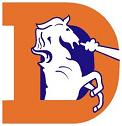
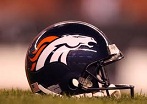
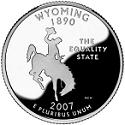
The 523-mi. 1908 Great Horse Race of Colorado-Wyoming began in Evanston, Wyo. on May 30, 1908, with 25 horses taking off, 12 of them tamed feral Western broncos (Spanish for rough). By the time they reached Cheyenne, Wyo, they were down to 5, 4 of them broncos. On June 5 in Brighton-Henderson, Colo., the officials declared a draw for the two lead horses, Sam (Colo. favorite) and Teddy (Wyo. favorite), and they were walked into downtown Denver led by a new 1908 automobile while 25K cheered, ending up in front of the Denver Post building for the reporters to get the story and photos. Later Clipper, Dek, and Bluebell (all broncs) came in 2nd through 4th. Later in 1960 the Denver Broncos NFL football team was founded, I don't know if this is where it got its name but it can be fudged for effect at will. A silhoutte of a cowboy on a bucking bronco is the official symbol of the state of Wyoming, as seen on the 2007 Wyoming Quarter.

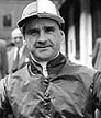
Meanwhile 4 mo. after Carrie Nation croaked on June 9, on Oct. 2, 1911 Laurel Park Racecourse outside Laurel, Md. opened. Too bad, it's now on the verge of bankruptcy. On June 11, 1921 the Belmont Stakes was run counterclockwise for the first time in its 53 years, breaking with the English custom; Grey Lag (1918-42) (jockey Earle Sande) was the winner. Also in 1921 British jockey Sir Gordon Richards (1904-88) rode his first winner. In 1954 he retired with 4,870 races won out of 21,834. Also in 1921 Hialeah Park Race Track in Hialeah in south Florida opened, getting damaged by hurricanes in 1926 and 1930, then reopening on Jan. 14, 1932 complete with the first Totalisator in the U.S. One of the most beautiful racetracks on Earth, it is famous for its flocks of flamingos. This helped bring the Sport of Kings back to the pink during the Roaring Twenties, er, Thirties, just in time for the end of Prohibition in 1933.
Quick to get into the sin business, My Kind of Town Chicago, Ill. opened Arlington Park Race Track in 1927, introducing a Totalisator in 1933, a photo-finish camera in 1936, an electric starting gate in 1940, and the first closed-circuit TV system in sports history in 1967. In 1971 it introduced Trifecta wagering, and in 1981 it hosted the world's first $1M race, the Arlington Million.
Meanwhile in Yee-Haw Texas, Arlington Downs Racetrack opened in 1929 for Quarter Horse racing, and parimutel wagering became legal in Texas in 1933, causing it to become a hot spot for Thoroughbred horseracing, with 6,734 avg. daily attendance to watch 650 horses; too bad, parimutuel betting was outlawed in 1937, killing the industry for 50 years until it was relegalized in 1987, causing a new explosion. Meanwhile the American Quarter Horse Association was founded in 1940 in Ft. Worth. In 1975 Manor Downs Racetrack in Manor, Texas opened, offering Quarter Horse Racing, followed by Thoroughbred racing after parimutuel betting was legalized; it closed in July 2010. On Apr. 24, 1994 Sam Houston Race Park in Harris County opened, becoming America's fastest growing horseracing venue. In 1997 Lone Star Park in Grand Prairie opened, hosting the Lone Star Million Day each Memorial Day, with six stakes races offering a total of $1M. Of course, Texas racecourses offer both Thoroughbred and Quarter Horse racing.
Meanwhile in 1922 in South Korea the Chosun Racing Club was founded to sponsor horse races. In 1923 it adopted the parimutuel betting system, which was done manually until 1984. In 1933 the Chosun Horse Racing Authority was established to regulate the sport nationally, getting renamed in 1945 to the Korea Racing Authority. Too bad, the Korean War in 1950-3 shut the sport down, but in May 1954 a new racecourse at Ttukseom in Seoul opened, becoming the #1 venue until the Gwacheon Racecourse (Seoul Race Park) in Gwacheon, Seoul opened on Sept. 1, 1989.
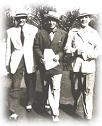

After Prohibition ended, gambling, er, horseracing enjoyed a spurt in the U.S. during the Great Depression, which was only bad for the masses, the rich just getting richer and needing some hobbies to risk their excess dough. In 1933 Longacres Racetrack in Renton, Wash. opened, becoming the longest continually operated track on the West Coast until it closed in Sept. 1992. In 1935 it founded the Longacres Mile Handicap. In 1934 Santa Anita Park in Arcadia, Calif. opened, going on to found the Santa Anita Derby and the Santa Anita Handicap in 1935. In 1936 Keeneland in Lexington, Ky. opened as a nonprofit auction house that uses the proceeds to further the Thoroughbred racing industry, opening Keeneland Race Course in 1936, which in 1937 began hosting the Blue Grass Stakes (first run in 1911-14 and 1919-26) as a prep for the Kentucky Derby. On July 3, 1937 Del Mar Racetrack in Del Mar, Calif. (20 mi. N of San Diego) was opened by celeb co-owner Harry Lillis "Bing" Crosby (1903-77), going on to become a playground for Hollywood stars, with the motto "Where the Surf Meets the Turf." In 1938 Hollywood Park in Inglewood, Calif. was opened by the Hollywood Turf Club, chaired by Canadian-born Jacob Leonard "Jack" "J.L." Warner (Wonsal) (1892-1978) of Warner Brothers Studios; many Hollywood stars were on the board, including Al Jolson, Raoul Walsh, and Mervyn LeRoy. On Feb. 1, 1939 Gulfstream Park Racetrack in Hallandale Beach, Fla. opened, installing the world's largest Totalisator in 1961.
In 1946 the first Little Brown Jug Race, featuring 3-y.-o. pacing Standardbreds was held in Delaware, Ohio, becoming the middle leg of the Triple Crown of Harness Racing for Pacers, including the Cane Pace (founded 1955) in Freehold, N.J., and the Messenger Stakes (founded 1956) in Westbury, N.Y. et al. Only ten horses have win the Pacing Triple Crown, the last being No Pan Intended in 2003. This is not to be confused with the Triple Crown of Harness Racing for Trotters, founded 1955, including the Hambletonian (founded 1926) at Meadowlands Racetrack in East Rutherford, N.J., the Yonkers Trot at Yonkers Raceway in Yonkers, N.Y., and the Kentucky Futurity (founded 1893) at the Red Mile in Lexington, K.Y. Only eight horses have won the Trotting Triple Crown, the last being Glidemaster in 2006.
On June 12, 1948 Thoroughbred Racing on CBS debuted on CBS-TV with the broadcast of the Belmont Stakes, followed by the Preakness Stakes; it first broadcasts the Kentucky Derby in 1952, becoming the first time it is connected to network lines; meanwhile NBC-TV broadcasts the Belmont Stakes 1950-2.
In 1950 the National Museum of Racing and Hall of Fame in Saratoga Springs, N.Y. was founded. Announcement of new inductees is made during Kentucky Derby Week in early May. In 1976 the Canadian Horse Racing Hall of Fame in Toronto, Ont. was established.
In 1954 the Japan Racing Association was founded to oversee horseracing in Japan along with the National Association of Racing. The Japan Cup was first run in Nov. 1981 at Tokyo Racecourse (founded 1933) in Fuchu, Tokyo (Japan's #1 horseracing venue), reaching a purse of $5.8M.
In Sept. 1967 appaloosa horse Snippy (Lady) is reported killed and mutilated (heart and brain removed) by aliens from outer space by owner Nellie Lewis of Alamosa, Colo. , becoming the first reported victim of alien animal mutilation; in 2007 its skeleton is put up for auction on eBay with a minimum $50K asking price.
In 1969 the Pyramid Society in Lexington, Ky. is founded to breed Egyptian Arabian horses.
Too bad, horseracing lost popularity in the U.S. in the 1950s and 1960s, until the advent of a magic string of American Triple Crown winners in the 1970s, starting with Secretariat in 1973, then Seattle Slew in 1977 and Affirmed in 1978. The 1980s saw popularity began to decline again as a new Triple Crown winner failed to materialize until.. we're still waiting.

The first Breeders' Cup Thoroughbred horserace was held in Oct. 1984 in Hollywood Park in Calif., becoming a year-end championship attracting horses from the U.S. and Europe. It was founded by pet food heir John R. Gaines (1928-2005), who wanted to clean up the sport's dog food image.
On May 3, 1995 France Galop was founded as the governing body of flat and steeplechase horseracing in France. By 2007 it had 9.5K members including horse owners, trainers, jockeys, breeders, and officials, and organized 6.5K races.
On June 20, 1996 Emerald Downs Racetrack in Auburn, Wash. opened, replacing Longacres Racetrack, which closed in Sept. 1992. I don't know if there's Microsoft money behind it, but there probably is at least when it comes to the employees betting on the horses there.
As the 20th century closed, the arrogant West got a wakeup call from the reviving Muslim world, which was rich with oil money and decided to take us on in horseracing. In 1996 the Dubai World Cup was founded, becoming the world's richest Thoroughbred horserace in 2010 with a $10M purse.
In 2003 the Sunshine Millions, a series of eight Thoroughbred horseraces was first held in Jan. at Santa Anita Park in Arcadia, Calif. and Gulfstream Park in Hallandale Beach, Fla., half on each sunny track.
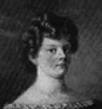


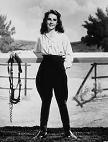

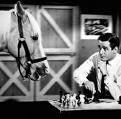
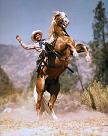

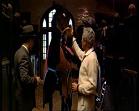

Horses have long had their place in the world of entertainment. In 1877 the novel Black Beauty: The Autobiography of a Horse, by invalid English novelist Anna Sewell (1820-78) was published, becoming a worldwide bestseller, with 50 million copies sold, launching the horse lovers' genre. She sold it to Jarrods for 40 English pounds. "There is no religion without love, and people may talk as much as they like about their religion, but if it does not teach them to be good and kind to man and beast, it is all a sham." It was filmed in 1921, 1946, 1971, and 1994, and in 1972-4 the British TV series The Adventures of Black Beauty milked it dry. In 1910-35 cowboy actor Thomas Edwin (Hezikiah) "Tom" Mix (1880-1940) made 336 films featuring Tony the Wonder Horse (1899-1942), who outlived him after he died in an automobile accident. In 1935 Enid Algerine Bagnold, Lady Jones (1889-1981) published National Velvet, about 14-y.-o. Velvet Brown, who wins the Grand National steeplechase on the Piebald. It was filmed in 1944 starring Elizabeth Taylor. In 1941 My Friend Flicka by Mary O'Hara (Alsop) (1885-1980) was published, about Wyoming rancher boy Ken McLaughlin and his horse Flicka. It was filmed in 1943 starring Roddy McDowall, the 1940s were great for young actors getting their start in G-rated horse flicks. In 1941 Walter Farley (1915-89) published The Black Stallion, which was so popular he wrote 33 sequels. It is about young Alec Ramsay, who comes into the possession of an Arab sheikh's prized stallion named Shetan or the Black, sounds like a horror story but it isn't. When TV entered its heyday, the CBS-TV series Mister Ed (1961-66) starred a palomino horse who could talk, played by gelding Bamboo Harvester (1949-70). Let's not forget Trigger (1932-65), a golden palomino owned by cowboy star Roy Rogers (Leonard Franklin Slye) (1911-98), who could walk 50 ft. on his hind legs and knew 150 tricks; Rogers bought him after he debuted in the 1938 film "The Adventures of Robin Hood" under the name Golden Cloud. Another big TV horse was Silver, a white stallion ridden by the Lone Ranger, who started out as a radio show on WXYZ radio in Detroit, Mich. on Jan. 30, 1933, and became a popular TV show from 1949-57 starring Clayton (Jack Carlton) Moore (1914-99). His sidekick Tonto's horse was a Pinto named Scout. Too bad, Francis Ford Coppola's 1972 film The Godfather stunk itself up with the decapitation of $600K Thoroughbred racehorse Khartoum to cement an offer Hollywood movie mogul Jack Woltz couldn't refuse.

Enough about fictional horses. Let's take a quick stroll down memory lane and scope the top real horses of the 20th century. In 1903 the big three English Thoroughbreds were Ard Patrick (1899-1923) (winner of the 1902 Epsom Derby), Sceptre (1899-1926), and Rock Sand (1900-14), who had it out at the Epsom Stakes on July 17, where Ard Patrick edged out Sceptre by a neck. In the U.S., Man o'War (1917-45) was maybe the greatest Thoroughbred racehorse of all time, winning 20 of his 21 races and $249,465 in purses.
Another top horse is Quashed (1932-?), a British Throughbred filly who won the Epsom Oaks in 1935 then defeated Omaha (1932-59) of the U.S. (3rd U.S. Triple Crown winner in 1935) at the Ascot Gold Cup on June 18, 1936 in one of the most thrilling battles ever. Too bad, her pedigree was questionable, and her descendants were duds.

Another top horse is Seabiscuit (1933-47), who became a symbol of hope during the Great Depression after a big 4-length V against War Admiral (1934-59) in the "Match of the Century" on Nov. 1, 1938 at Pimlico Race Course, which was listened to by 40M on the radio and inspired a film in 1949 and another in 2003. Earlier on Aug. 12, 1938 Seabiscuit defeated Ligaroti by a nose at Del Mar Racetrack, taking it over the top and cementing its success.

Another top horse is Citation (1945-79), 1948 U.S. Triple Crown winner #8, the first horse in history to win $1M. Citation, Cigar (1990-) and Zenyatta (2004-) are the only three North American Thoroughbreds to win 16 consecutive races in major stakes races. Another top horse is Secretariat (1970-89), AKA Big Red, 1973 U.S. Triple Crown winner #9 (first in 25 years), who set records in the Kentucky Derby (1:59.40) and Belmont Stakes (2:24.00) that still stand today. His win in the Belmont Stakes on June 9, 1973 by 31 lengths was so memorable that 5,617 winning tickets were kept as souvenirs. Also let's not forget Seattle Slew (1974-2002), 1977 U.S. Triple Crown winner #10, the only horse to win while undefeated.
Another great horse was Irish Thoroughbred champion steeplechaser Arkle (1957-70), who on Mar. 7, 1964 avenged a defeat by defeating English champion Mill House (1957-) by 5 lengths in a 2-horse race that was in reality a national rivalry. The disgruntled Brits forced Arkle to carry 2.5 stones more weight than the other horses in the 1964 Irish Grand National, which he still won by 1 length. In 1965 Arkle crushed Mill House in a Gold Cup rematch by 20 lengths. Arkle became a national hero in Ireland, often referred to as Himself, and was said to drink Guinness twice a day, their ultimate compliment. Dominic Behan released a hit ballad titled Arkle.
Another top but sad Thoroughbred champion was Ruffian (1972-5), who was winning the Belmont Stakes on July 6, 1975 by half a length when both sesamoid bones in her right foreleg snapped, which didn't stop her from trying to finish the race, after which she was operated on by four vets and an orthopedic surgeon, but woke up and began running circles on the floor until she destroyed the surgery, and had to be euthanized, and was buried in the infield of Belmont Park with her nose pointed toward the finish line. Her story was told in the 2007 ABC-TV movie Ruffian.
Another top Thoroughbred was Irish champion Grundy (1972-92), who on July 26, 1975 dueled to the end at the King George VI and Queen Elizabeth II Diamond Stakes at Ascot with British champion Bustino (1971-). Grundy won by half a length, setting a race record of 2:26.98, and the race was called "Britain's Race of the Century". Too bad, the race broke both horses, and their racing careers were kaput, somebody arrest somebody.
Another pair of hot horses were Irish steeplechaser Monksfield (1972-89) and English rival Sea Pigeon (1970-). Monksfield defeated Sea Pigeon in the Champion Hurdle at Cheltenham in 1978, and again on Mar. 14, 1979 by 3/4 of a length. In 1980 Sea Pigeon beat Monksfield in the same race by 7 lengths for sweet revenge, winning again in 1981 and becoming the oldest winner of the race.
One of the greatest horseraces of the 20th century ended in tragedy, the Breeders' Cup Distaff at Belmont Park on Oct. 27, 1990, when 3-y.-o. American Thoroughbred filly Go For Wand (1987-90) dueled with Argentine mare Bayakoa (1984-97) (previous year's winner), going neck and neck to the home stretch, when Go For Wand tripped near where Ruffian was buried, breaking her right foreleg, and she had to be put down.
Maybe it's due to inbreeding, maybe not, let's hope that stem cells are the answer, but more and more Thoroughbreds shatter their legs during races. The worse was Barbaro (2003-7), who after winning the 2006 Kentucky Derby shattered his leg two weeks later in the Preakness Stakes on May 20, 2006, and after many operations and long treatment was euthanized on Jan. 29, 2007.

On May 1, 2004 despite smashing his head against an iron bar and fracturing his skull the year before, causing him to be nicknamed "Quasimodi" for his swollen head and eyes, Philly's favorite son Smarty Jones (2001-) (chestnut colt) (jockey Stewart Elliott in his Triple Crown debut), owned by emphysema sufferer Roy Chapman (1926-2006) wins the Kentucky Derby, becoming the first horse with a perfect record to win since Seattle Slew in 1977; on May 15 he wins the 129th Preakness by a record 11.5 lengths; on June 5 at Belmont (a 3-10 favorite) he fades in the stretch and is beaten by 36-1 longshot Birdstone (2001-) (jockey Edgar Prado) by a length; he retires in the summer.
On June 7, 2014 the 2014 Belmont Stakes and Triple Crown #12 are won by ("the People's Horse") (fans are called Chromies, known for wearing purple band-aids on their noses) California Chrome (2011-), ridden by Mexican-born jockey Victor Espinoza (1972-), who was on a 6-game winning streak and hoping to become the first Triple Crown winner since Affirmed in 1978; er, he comes in a tie for 4th in a field of 11 with Wicked Strong, and Tonalist (2011-) wins in 2:28.52, with Commissioner and Medal Count coming in 2-3, causing owner Steve Coburn to grumble that California Chrome was targeted by the other owners, who ran fresh horses that didn't have to run the other two legs of the Triple Crown, calling for reform, with the soundbyte: "It's all or nothing. This is not fair to these horses and to the people that believe in them. This is the coward's way out."
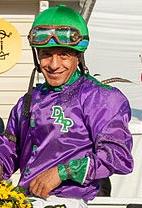
On May 2, 2015 the 2015 (141st) Kentucky Derby is won by American Pharoah (2012-) (named after Pres. Obama?) in 2:03:02, becoming the 3rd win for Mexican-born jockey Victor Espinoza (1972-); on June 6 he wins the 2015 (147th) Belmont Stakes gate-to-wire by 5-1/2 lengths (3rd biggest margin) in 2:26:65, becoming the first Triple Crown winner since Affirmed in 1978, and 12th total; Espinoza becomes the oldest jockey to win the Triple Crown (until ?).
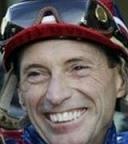
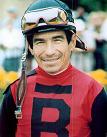
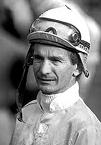
Let's not forget the top jockeys of all time. #1 is Canadian-American Russell A. Baze (1958-), who became the first jockey to reach 11K wins on Aug. 14, 2010. #2 is Panamanian-born Laffit Alejandro Pincay Jr. (1946-), with 9.5K wins. #3 is Texas-born William Lee "Willie" Shoemaker (1931-2003), with 8,833 wins and $123,375,524 in earnings, who was paralyzed in a drunk driving accident on Apr. 8, 1991; he won 11 Triple Crown races, but never the Triple Crown itself, the worst being when he stood up in the stirrups too soon on leader Gallant Man (1954-88) in the 1957 Kentucky Derby and lost by a nose to Iron Liege (1954-72).
In the early 21st cent. online horseracing games have started to became popular, letting a player play jockey and ride any desired horse real or fictional, and develop betting and breeding skills, building up bragging rights by playing against others around the world. Maybe real horses will one day be left alone so that the, naw, forget it. Here is a list of some good online horseracing fantasy games: